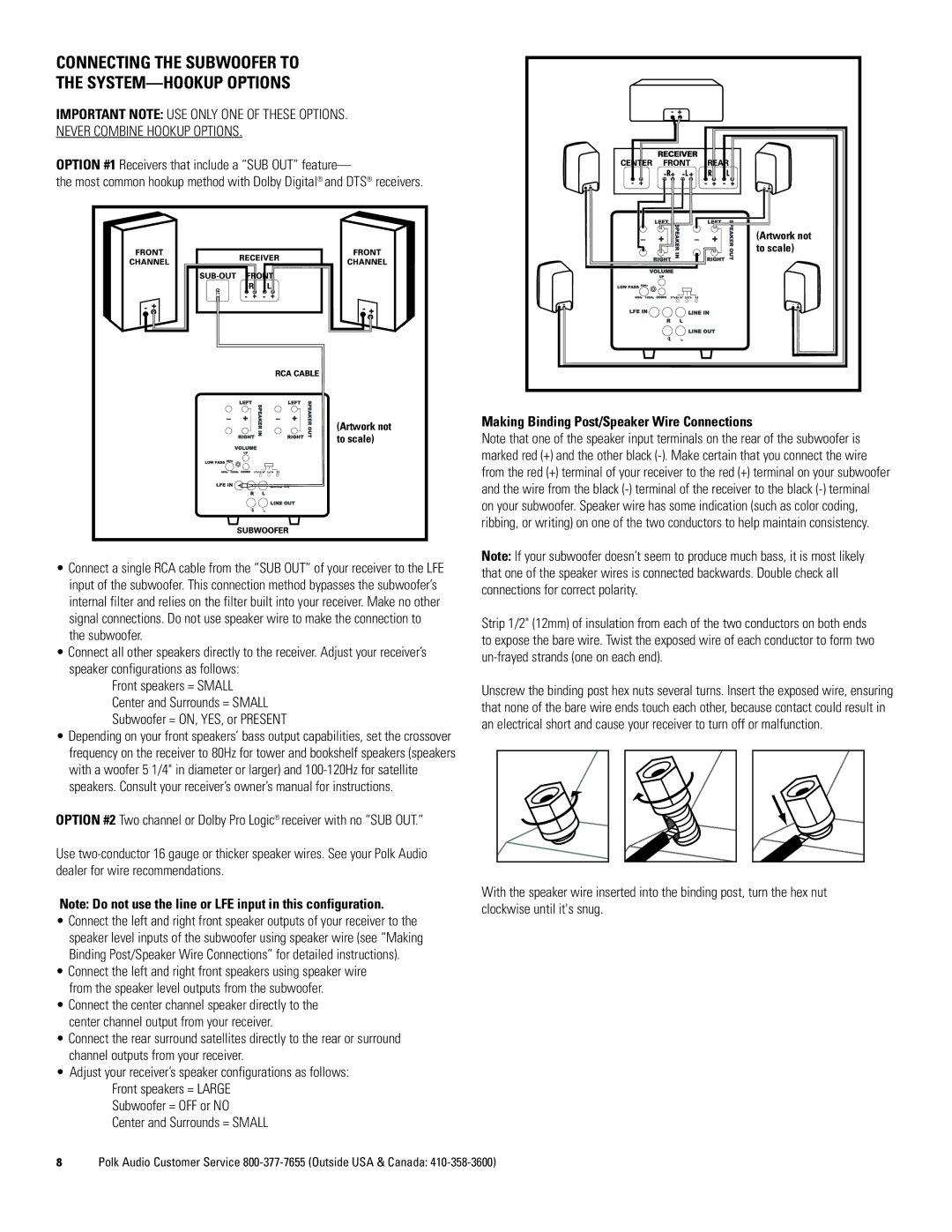DSWPRO600, DSWPRO400, DSWPRO500 specifications
Polk Audio has long been a name synonymous with high-quality audio equipment, and their DSWPRO series of subwoofers—specifically the DSWPRO400, DSWPRO500, and DSWPRO600—are no exception. Designed to offer deep, powerful bass while seamlessly integrating into any home theater setup, these subwoofers boast a range of features and technologies that enhance the listening experience.One of the hallmark features of the DSWPRO series is Polk's proprietary Dynamic Balance technology. This innovation ensures cleaner, more accurate sound reproduction by minimizing distortion. It allows for a broader frequency response, producing rich bass that is both powerful and precise. Each model in the series also features a high-efficiency Class D amplifier, delivering impressive power output while remaining energy-efficient.
The DSWPRO400, the entry-level model, comes with an 8-inch driver and can deliver up to 150 watts of power. Its compact design makes it an excellent choice for smaller rooms or spaces where placement is a concern. The DSWPRO500 steps up with a 10-inch driver, providing deeper bass and enhanced sound quality, while its 200-watt output power makes it suitable for larger rooms. The flagship model, the DSWPRO600, features a robust 12-inch driver that can handle up to 300 watts of power, making it ideal for audiophiles looking for a more impactful low-end experience.
All models in the DSWPRO series come equipped with advanced features like a built-in low-pass crossover and a phase control switch, allowing users to customize the subwoofer's performance to best fit their specific audio ecosystem. The front-firing port design helps maximize room acoustics, ensuring that sound waves emanate uniformly throughout the space.
Polk Audio has also emphasized user-friendliness in the DSWPRO series. With easy-to-access controls located on the rear panel, adjusting settings like volume and crossover frequency is a breeze. Additionally, the subwoofers support a range of connectivity options, including RCA and speaker-level inputs, making it easy to integrate them into various home audio setups.
With their combination of advanced technology, sleek design, and robust performance, the Polk Audio DSWPRO400, DSWPRO500, and DSWPRO600 subwoofers are excellent choices for anyone looking to enhance their audio experience, whether it's for music, movies, or gaming. These models offer the versatility and power needed to bring your favorite content to life, making them a worthy investment for any sound enthusiast.

